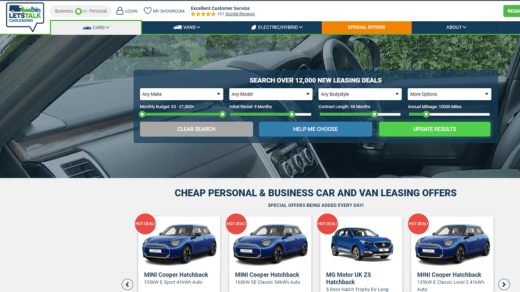The Ultimate Guide to Car Leasing: Flexibility, Affordability, and Latest Technology

Leasing a car has become an increasingly popular option for many consumers in recent years, offering flexibility and affordability that buying a new vehicle outright might not provide. Whether you’re considering leasing for the first time or simply exploring your options, understanding the basics can help you make an informed decision.
1. What is Car Leasing?
Car leasing is essentially a long-term rental agreement. Instead of owning the vehicle, you pay a monthly fee to use it for an agreed-upon period, typically 2 to 4 years. At the end of the lease term, you return the car to the leasing company.
2. Lower Initial Costs
One of the primary attractions of leasing is the lower initial costs compared to buying a new car. Rather than paying the full purchase price, you typically make a small initial payment (often equivalent to a few months’ lease payments) and then pay monthly installments throughout the lease term. This can be particularly advantageous if you want to drive a new car with the latest features but don’t have a large sum of cash available for a down payment.
3. Predictable Monthly Payments
Leasing offers predictable monthly payments, which can make budgeting easier. The lease agreement specifies the monthly cost, usually based on the vehicle’s depreciation over the lease term. This stability can be appealing compared to the potential unpredictability of maintenance costs and depreciation associated with owning a vehicle outright.
4. Maintenance and Repairs
Many lease agreements include maintenance packages that cover routine servicing and repairs during the lease period. This can save you money and hassle, as you won’t need to budget separately for these expenses. However, it’s essential to review the terms of the maintenance package to understand what is covered and any limitations that may apply.
5. New Vehicles and Technology
Leasing allows you to drive a new car with the latest technology and safety features every few years. This can be advantageous if you enjoy having access to cutting-edge automotive innovations without committing to long-term ownership of a particular vehicle model.
6. Mileage Restrictions and Wear and Tear
Lease agreements typically come with mileage restrictions, such as 10,000 to 15,000 miles per year. Exceeding these limits can result in additional fees at the end of the lease term. It’s important to estimate your annual mileage accurately and negotiate a mileage allowance that meets your driving needs.
7. End of Lease Options
At the end of the lease term, you have several options:
- Return the car and lease a new vehicle.
- Purchase the leased car at a predetermined residual value (the estimated value of the car at the end of the lease).
- Simply return the car and walk away, provided you’ve adhered to the lease terms regarding mileage and condition.
8. Considerations Before Leasing
Before deciding to lease a car, consider the following:
- Financial Stability: Ensure you can afford the monthly lease payments throughout the lease term.
- Driving Habits: Evaluate your typical mileage and ensure it aligns with the lease agreement’s mileage restrictions.
- Insurance: Check with your insurance provider to understand any differences in coverage requirements between leasing and owning a vehicle.
Conclusion
Leasing a car offers flexibility, lower initial costs, and the opportunity to drive new vehicles with advanced features regularly. However, it’s essential to understand the terms of the lease agreement fully and consider your individual financial situation and driving habits before committing. By doing so, you can make an informed decision that aligns with your needs and preferences in acquiring a vehicle.




